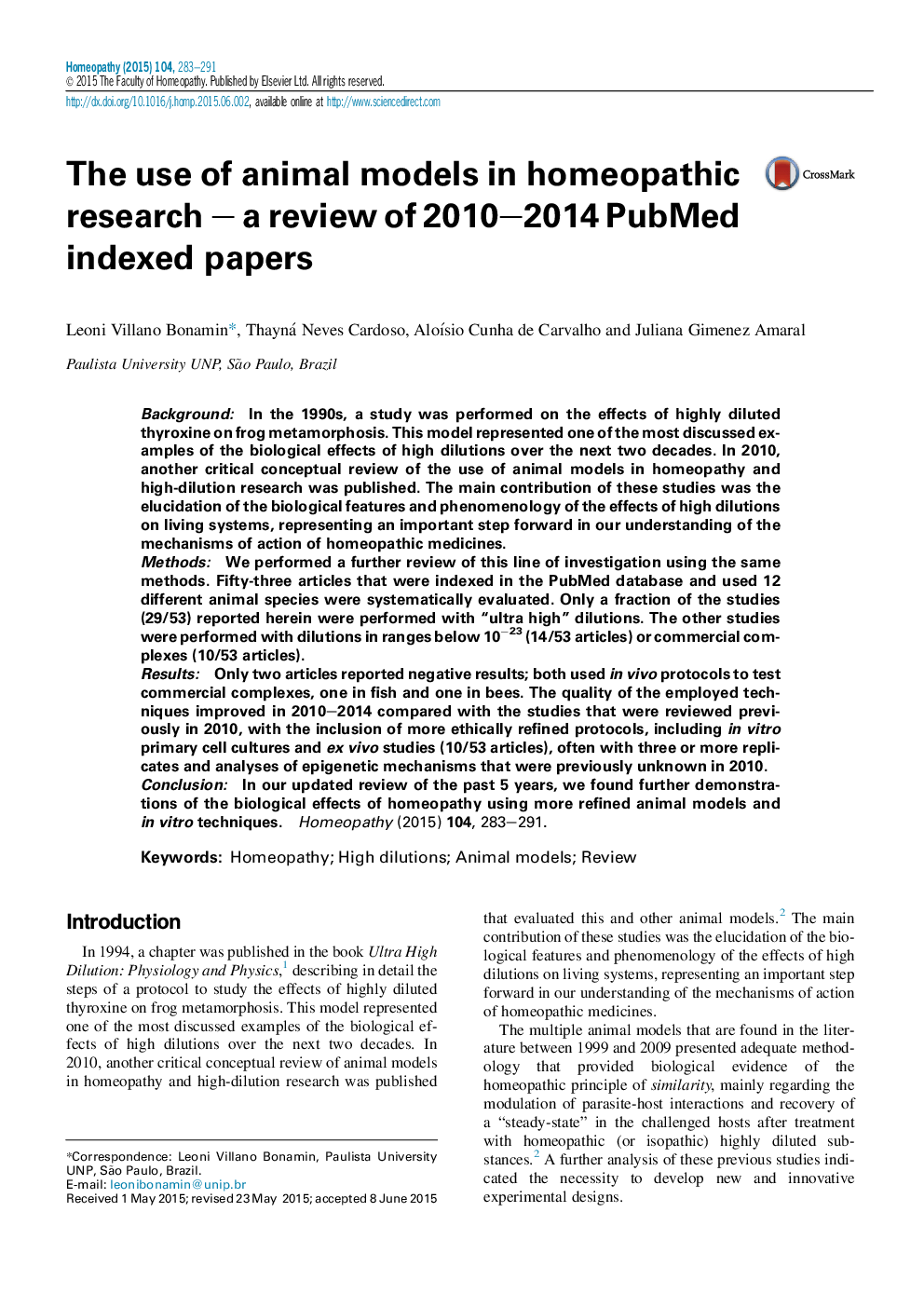| Article ID | Journal | Published Year | Pages | File Type |
|---|---|---|---|---|
| 2629807 | Homeopathy | 2015 | 9 Pages |
•A new review about animal models for studying homeopathy was made, considering the publications between 2010 and 2014.•The methods were similar to that used previously, for the 2000–2010 review.•The majority of the studies were performed with dilutions above Avogadro's number.•12 different species were used among consulted papers, including fish.•Only two negative results were identified.•The use of no-mammal species and more refined techniques increased among the studies, comparing to the previous period.
BackgroundIn the 1990s, a study was performed on the effects of highly diluted thyroxine on frog metamorphosis. This model represented one of the most discussed examples of the biological effects of high dilutions over the next two decades. In 2010, another critical conceptual review of the use of animal models in homeopathy and high-dilution research was published. The main contribution of these studies was the elucidation of the biological features and phenomenology of the effects of high dilutions on living systems, representing an important step forward in our understanding of the mechanisms of action of homeopathic medicines.MethodsWe performed a further review of this line of investigation using the same methods. Fifty-three articles that were indexed in the PubMed database and used 12 different animal species were systematically evaluated. Only a fraction of the studies (29/53) reported herein were performed with “ultra high” dilutions. The other studies were performed with dilutions in ranges below 10−23 (14/53 articles) or commercial complexes (10/53 articles).ResultsOnly two articles reported negative results; both used in vivo protocols to test commercial complexes, one in fish and one in bees. The quality of the employed techniques improved in 2010–2014 compared with the studies that were reviewed previously in 2010, with the inclusion of more ethically refined protocols, including in vitro primary cell cultures and ex vivo studies (10/53 articles), often with three or more replicates and analyses of epigenetic mechanisms that were previously unknown in 2010.ConclusionIn our updated review of the past 5 years, we found further demonstrations of the biological effects of homeopathy using more refined animal models and in vitro techniques.
